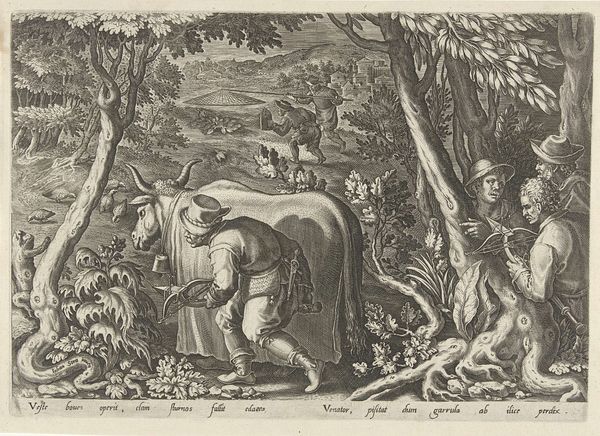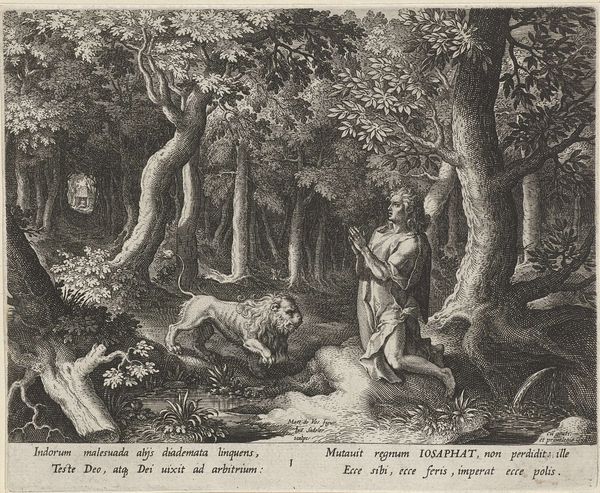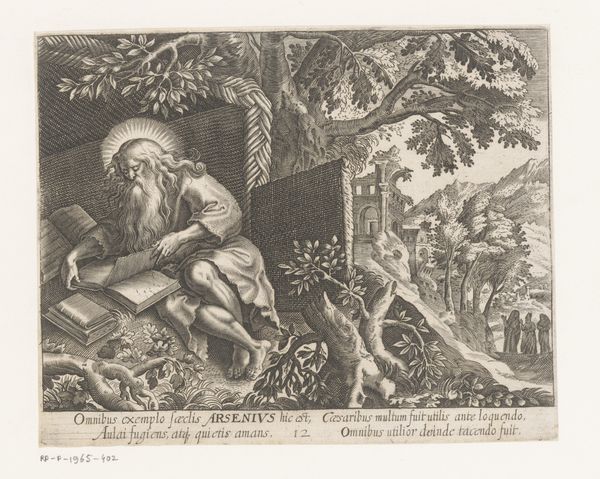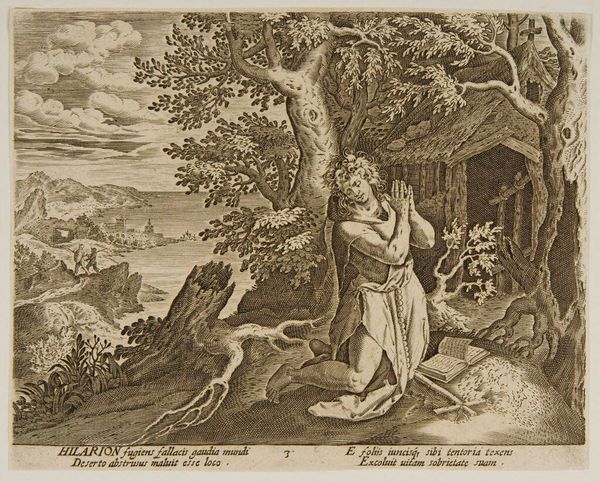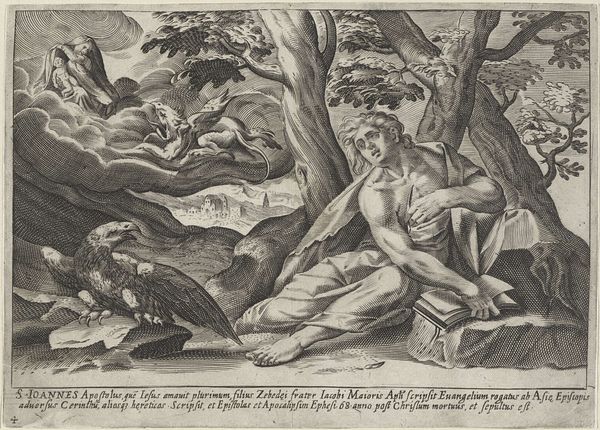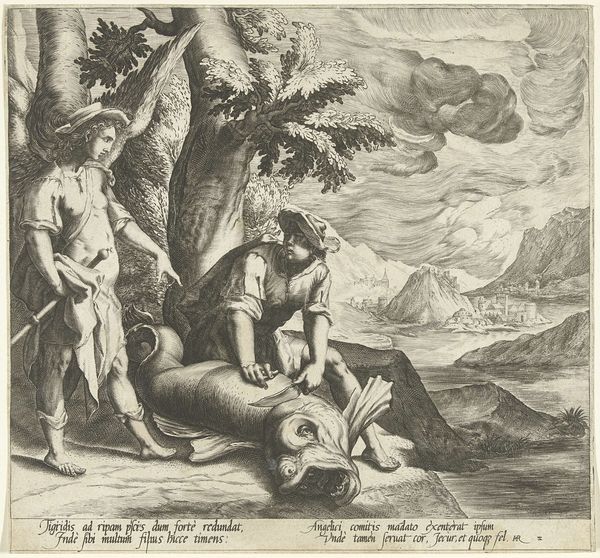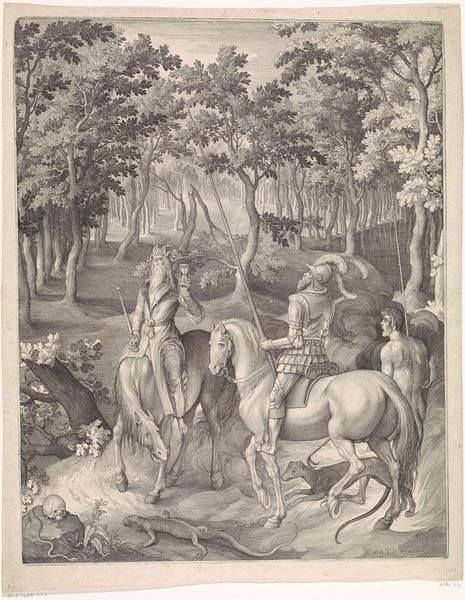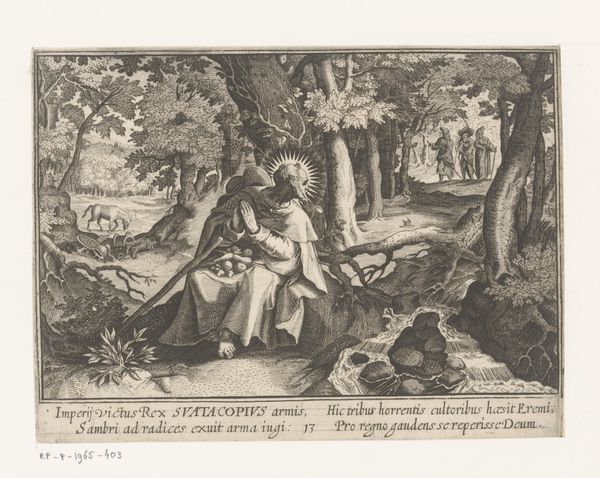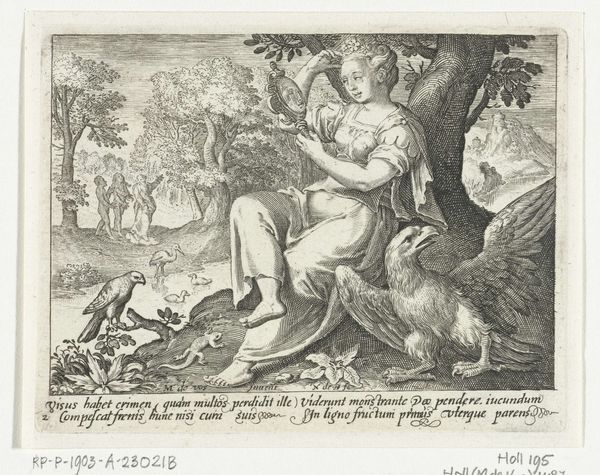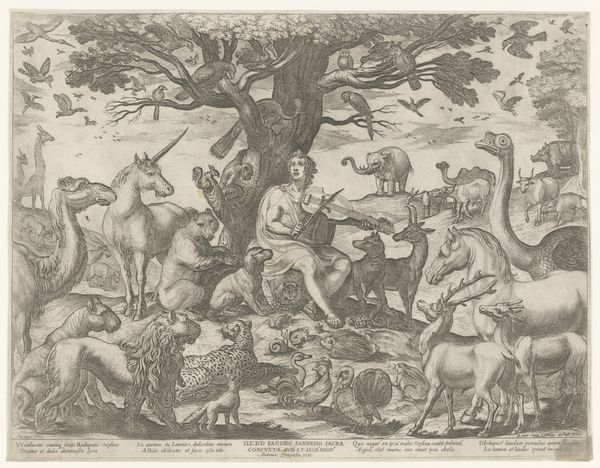
engraving
#
tree
#
baroque
#
landscape
#
figuration
#
forest
#
history-painting
#
engraving
Dimensions: width 200 mm, height 164 mm
Copyright: Rijks Museum: Open Domain
This engraving by Johann Sadeler, dating around 1600, portrays Saint Andrew Zoerardus as a hermit, surrounded by the wilderness. Note the spiky enclosure: its sharp points, emblems of relentless penance, are designed to prevent him from sleeping. Around his neck and leg, he wears a heavy iron chain, and a metal contraption encircles his head. This apparatus represents a spiritual and physical commitment to vigilance and asceticism. This iconography is deeply rooted in medieval monastic traditions. Chains and spikes are a recurrent motif, linking Saint Andrew to earlier ascetics, such as the Desert Fathers. The act of self-mortification, found across religions and eras, serves as a potent symbol of spiritual purification. We see echoes of this in practices from flagellation to the wearing of cilices. These motifs, though varied, share a common thread, they evoke a collective memory, a deep psychological impact, tapping into the human psyche's capacity for sacrifice. Such symbols of self-discipline are not linear but rather cyclical. They resurface, adapt, and acquire new meanings across history, reflecting humanity’s continuous search for meaning through sacrifice and redemption.
Comments
No comments
Be the first to comment and join the conversation on the ultimate creative platform.

